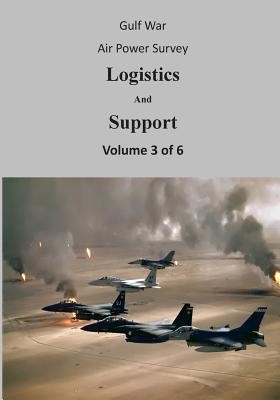
- We will send in 10–14 business days.
- Author: U S Air Force
- Publisher: CreateSpace Independent Publishing Platform
- Year: 2015
- Pages: 788
- ISBN-10: 1508562245
- ISBN-13: 9781508562245
- Format: 17.8 x 25.4 x 4 cm, softcover
- Language: English
- SAVE -10% with code: EXTRA
Reviews
Description
This report discusses logistics in the Persian Gulf War as it applies to all military operations and in particular to air operations. Simply put, how did the United States equip its forces for Desert Shieldand Desert Storm? Logistics also includes functions for maintaining an air base and support services. These aspects of logistics will be coveredin the two parts of this volume.One of the simpler, but nonetheless comprehensive, definitions of logistics was documented by Baron Antoine Henri Jomini subsequent to the Napoleonic Wars, when he defined logistics as the "practical art of moving armies."' A Joint Chiefs of Staff definition expands on Jomini's version, expressing logistics asThe science of planning and carrying out the movement and maintenance of forces. In its most comprehensive sense, those aspects of military operations which deal with: a. design anddevelopment, acquisition, storage, movement, distribution, maintenance, evacuation, and disposition of materiel; b. movement, evacuation, and hospitalization of personnel; c. acquisition, or construction, maintenance, operation, and disposition of facilities; and d. acquisition or furnishing of services. *The Gulf War encompassed all of these aspects of logistics, and did so on a grand scale. One of the main reasons for success in this conflict was the ability of the U.S. military to respond logistically-tomove, beddown, and sustain the combat forces. The primary focus of our survey was to examine airpower application in a theater devoid of prioroperational presence. This unique environment presented airpower managers with severe challenges to assure efficient and effective application of combat force. We examine the state of logistics prior to the conflict, the characteristics of planning, the efforts to put combat and supportelements in place, the support of air operations during combat; and in particular, how planners envisioned the role of logistics in supporting airforces to achieve Coalition objectives and execute military strategy.
EXTRA 10 % discount with code: EXTRA
The promotion ends in 17d.09:21:47
The discount code is valid when purchasing from 10 €. Discounts do not stack.
- Author: U S Air Force
- Publisher: CreateSpace Independent Publishing Platform
- Year: 2015
- Pages: 788
- ISBN-10: 1508562245
- ISBN-13: 9781508562245
- Format: 17.8 x 25.4 x 4 cm, softcover
- Language: English English
This report discusses logistics in the Persian Gulf War as it applies to all military operations and in particular to air operations. Simply put, how did the United States equip its forces for Desert Shieldand Desert Storm? Logistics also includes functions for maintaining an air base and support services. These aspects of logistics will be coveredin the two parts of this volume.One of the simpler, but nonetheless comprehensive, definitions of logistics was documented by Baron Antoine Henri Jomini subsequent to the Napoleonic Wars, when he defined logistics as the "practical art of moving armies."' A Joint Chiefs of Staff definition expands on Jomini's version, expressing logistics asThe science of planning and carrying out the movement and maintenance of forces. In its most comprehensive sense, those aspects of military operations which deal with: a. design anddevelopment, acquisition, storage, movement, distribution, maintenance, evacuation, and disposition of materiel; b. movement, evacuation, and hospitalization of personnel; c. acquisition, or construction, maintenance, operation, and disposition of facilities; and d. acquisition or furnishing of services. *The Gulf War encompassed all of these aspects of logistics, and did so on a grand scale. One of the main reasons for success in this conflict was the ability of the U.S. military to respond logistically-tomove, beddown, and sustain the combat forces. The primary focus of our survey was to examine airpower application in a theater devoid of prioroperational presence. This unique environment presented airpower managers with severe challenges to assure efficient and effective application of combat force. We examine the state of logistics prior to the conflict, the characteristics of planning, the efforts to put combat and supportelements in place, the support of air operations during combat; and in particular, how planners envisioned the role of logistics in supporting airforces to achieve Coalition objectives and execute military strategy.


Reviews